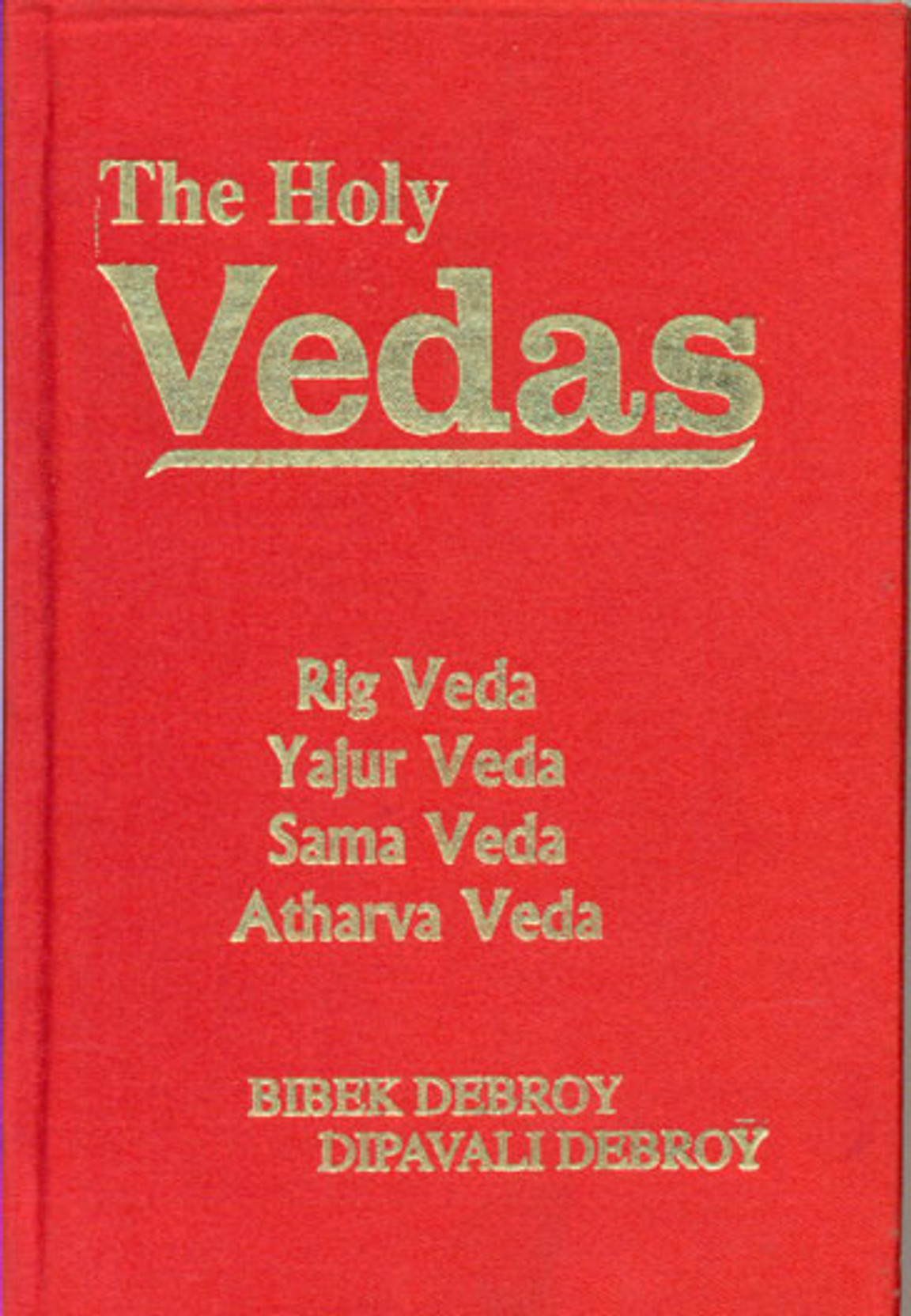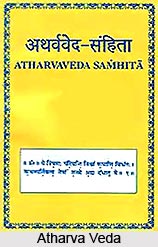

For instance Purusha sukta (RV 10.90) says "Tasmaat yagnaat sarva hutaH, RucaH-samaani jagnire, chandaagmsi jagnire tasmaat, yajus tasmaadajaayata". Rigveda itself mentions Yajurveda and Samaveda. While the modern view is that Rigveda is the oldest, it is only in compilation that it is possibly older. This is a poetic expression, this does not literally mean paramatma has a breath but just the way breath exists with a person's life similarly veda exists with God/creation. It said to exist eternally it is called the breath of Paramatma. Veda is anadi, having no beginning or end.Thus it is said know the One ( Brahman) by which everything else is known. Realizing the infinite through any single mantra/sukta of the Veda is equivalent to understanding the essence of any other mantra and the entire Veda. And the essence of Veda is said to be understood if one knows the infinite, i.e., opens up to the infinite Self.

However, Veda is the knowledge of Brahman, the True, Absolute and the Infinite. This can be understood in the sense that knowledge is infinite. Only an infinitesimal portion of it is revealed to humans. Traditionally the following features are attributed to the Veda: Its implications can be seen in later sections, especially when we discuss Darshanas and Puranas. But the concept that there is a single Parabrahman and that all Gods are Its forms, is more clearly visible towards the Vedanta (Upanishads). The Rigveda itself indicates that Truth is one - "ekam sad vipra bahudha vadanti agnim yamam matariswanam ahuh" (meaning Truth is one, but the learned refer to it in different names like agni, yama, matariswan). Sanyasi is supposed to contemplate on the Upanishads. Vanaprasthi is supposed to follow Aranyaka. Grhastha is supposed to follow the Brahmana. A brahmacari is supposed to study the Samhita. These four sections are mapped to the four Ashramas. But there are Upanishads like Taittireeya and Ganapathi Atharva Seersha that have svara.

Since Upanishads mostly philosophical they are found in prose. There are 108 Upanishads and 10 of them are famous. Thus Upanishad, as it appears in the last part of the Veda, is called Vedanta. Some Upanishads are exceptions and appear in Samhita and Brahmana too. Upanishads normally appear in the last part of Aranyaka and deal with spiritual philosophy. Aranyaka has Mantras and methods that are practiced in the forests (that is, not for grhasthas). The Vedas are known by other epithets, each of which only signify their importance - Apta-Vachan (" Divine Revelation)", Nigama (" Revelation"), Samhitas (" Collection"), Savda-Brahm (" Word of Brahm") or just Shabda (" Word"), Shruti (" Revelation" or " Testimony"), and Stotra (" Hymns.")Įach Veda has three sections - Samhita, Brahmana and Aranyaka. Atharva Veda gives ways to make life successful, and contains methods to fulfill what can be called material aspirations. Yajurveda has methods to use Riks for sacrifices (Yajus- Yajna). Rigveda contains prayers to Gods (Riks are the mantras). Vedas are four - Rig, Yajur, Sama and Atharva. Some of the verses are devoted entirely to ritual instruments and offerings, most of which symbolize certain aspects of Brahman (universal consciousness).Veda is the highest authority in Hindu knowledge system and the authority of all other scriptures are based on the authority of the Veda. Of all four Vedas, the Yajur Veda gathered the largest amount of schools, further dividing the Shukla and Krishna Yajur Vedas into the following samhitas (verses):ĭespite being based on the older Rig Veda, Yajur Veda differs in that it exclusively describes the technicalities of sacred rituals and ceremonies. The Vedas were originally transmitted by word of mouth, before being edited by various schools known as shakhas. The white Yajur Veda deals with prayers and specific instructions for devotional sacrifices, whereas the black Yajur Veda deals with sacrificial rituals. The Yajur Veda is divided into two parts - the white or "pure" Yajur Veda known as Shukla, and the black or "dark" Yajur Veda known as Krishna. The Yajur Veda prescribes these rituals, which are performed alongside the melodic chants of the Sama Veda.Įach of the four Vedas is assigned a specific Hindu priest hota for Rig Veda, adhvaryu for Yajur Veda, udgata for Sama Veda and brahman for Atharva Veda.Īlthough each priest plays an essential role in the religious rituals, the adhvaryu functions as executive priest, reciting from the Yajur Veda to assign sacrificial duties to the yajamana (ritual patron) and other priests.

At the heart of the Vedic tradition is a system of sacrifices, each of which depends upon invocations of specific deities. Yajur Veda is the third of the four Vedas, believed to have been composed between 1200 and 900 BCE.


 0 kommentar(er)
0 kommentar(er)
